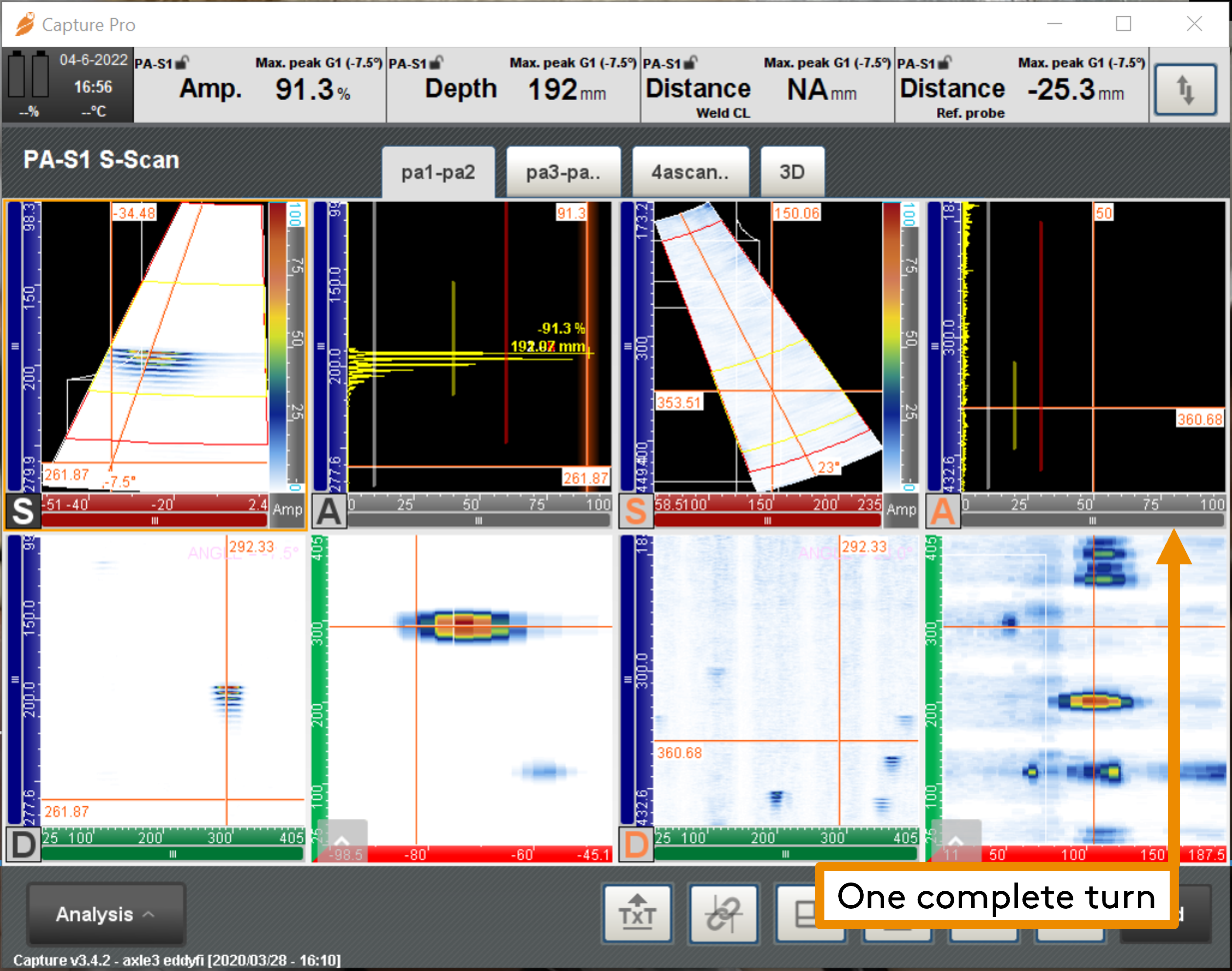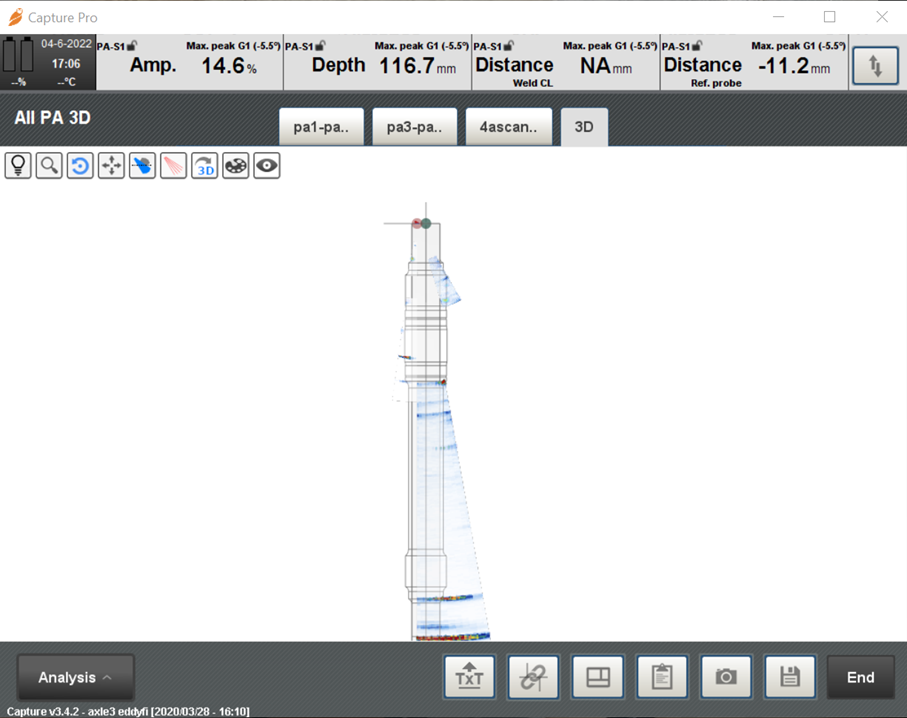How to Access Proactive Axle Integrity via Phased Array Ultrasonic
Ask an expertAnyone in the rail transportation sector understands exactly what is at stake not knowing the structural integrity of railroad assets regularly being deployed. Railroad car wheels are affixed to a straight solid axle and preventing the failure of these train axles is a key priority to avoid an accident. While the continued safe operation of the wheelsets is necessary for the rail industry, the challenge of inspecting train axles without disassembling the bogie and the axle is not an easy one. Here is the problem: one of the most prevalent defects encountered when performing a solid axle inspection is corrosion, an easily hidden culprit that can lead to transversal fatigue cracking and ultimately a potentially momentous disaster. There is simply no room for a haphazard assessment or not performing a comprehensive inspection for severe damage that could suddenly break the axle.
The Challenge
Detect train axle corrosion and cracks, particularly at the crack initiation stage, without having to remove the bogie.
Inspections focused on the detection of transversal fatigue cracks in train components like axles, even when the wheels are still mounted, are needed on a regular basis. Ultrasonic testing is the only technique able to cover the full volume of the train axle when the component is still in place with the wheels and the chassis. Unfortunately, a train axle features complex geometry that tends to generate echoes from its shape and using conventional ultrasonic testing usually requires several sets of wedges to ensure good coverage of the solid axles. The operator must be able to perform a correct scan that delivers reliable data that he or she feels completely confident in. In particular, the inspector must position the signals acquired at the correct location in the volume of the axle being inspected, not confusing echoes of real indications with echoes coming from the geometry. Once the data is collected, they must analyze the results in a quick and safe way, but in the end, it has been demonstrated that the probability of detection is not high enough to avoid dismantling the axle. Industry leaders seek a solution that would afford the obvious advantages inherent of an in-service train axle inspection.
The Solution
Phased array ultrasonic solution featuring unique probe with scanner collects repeatable, reliable inspection results.


Eddyfi Technologies offers advanced flaw detectors like the Gekko® or Mantis™ which are extensively used to detect and characterize cracks in metal components. The proposed solution includes:
- Gekko or Mantis phased array ultrasonic testing system to efficiently setup multi-group configurations, determine scan plans, and reconstruct data in the geometry of the axle,
- 16 or 32 element linear array to create the acoustic beams for crack detection,
- and a single axis scanner to rotate the probe on the end face to cover the full volume of the component.
Main access to the train axle is from both ends. Typically, the hole located in the middle of the axle is used by the scanner to hold a phased array ultrasonic probe steady. This probe is connected to the portable ultrasonic instrument with embedded software.

Figure 1: Axle Scanner
The easily installed axle scanner has an embedded encoding system that ensures a proper 360-degree scan to locate indications on the circumference during the analysis process. While surveying, the scanner allows a correct supply of liquid couplant or gel for the phased array probe so that the ultrasonic signals remain consistent all along the scan. The software provides analysis features with either a live display while scanning or an offline display used to finalize an inspection report. The display is a key feature: it is important to display the acquired signals on the drawing of the axle and show a true view of the train axle. The advanced tool is capable of performing phased array ultrasonic testing inspection with easy-to-interpret images with intuitive software for fast configuration.

Figure 2: Unique Scanner for Train Axle Inspection
Phased array ultrasonic testing has an excellent capacity to detect small transverse cracks. When the system is operated with a single axis encoded scanner and optimized probe, it offers rapid screening of large areas with a high probability of detection. Combining different views of phased array data for crack detection, it becomes fast and reproducible to ensure efficient solid axle inspections.

Figure 3: Typical Multi-Group Setup
Benefits
- Flaw detection and positioning is quick and easy with images superimposed over true view of axle geometry, minimizing human factor in data interpretation.
The scanner described for this application is very easily installed. It prevents the operator from holding the probe by hand, making the scan very comfortable. As the scanner embeds an encoder, every indication is accurately located on the circumference. Moreover, the operator can perform a scan on a single turn, but he or she can also acquire longer scans with two or more turns to ensure the repeatability of detection and secure the quality of the scan, including the quality of the supply of the liquid couplant or gel. As the display of the inspection data is superimposed over the drawing of the train axle geometry, the signals are more easily classified as defects or echoes coming from the geometry. This prevents mistakes that might be costly (unrequired rescans, unexpected disassembly, unexpected repairs).
Recognizing industry’s need for an in-service inspection solution that delivers trustworthy results, Eddyfi Technologies designed a custom scanner and phased array probe suited especially for this application that delivers clear information for making better decisions. To enjoy the same benefits, we invite you to contact us to discuss your next inspection campaign.
